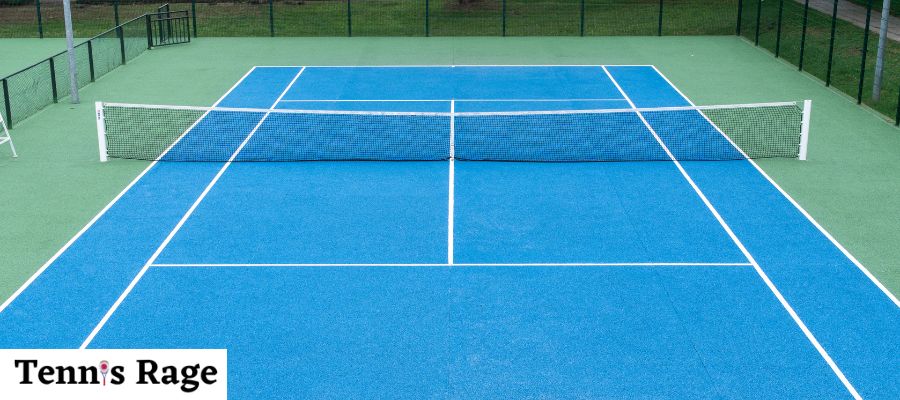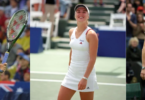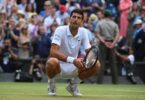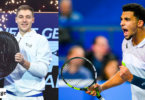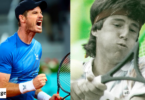With the U.S. Open coming up at the end of August, I wanted to write an article about hard courts. I previously wrote articles about clay and grass courts, so this article completes the series on the different Grand Slam tournament surfaces.
Over the course of the year, the vast majority of tournaments are played on hard courts. Of the 65 tournaments on the ATP schedule, including 61 ATP tournaments and 4 Grand Slams, 36 tournaments are played on hard courts, 21 tournaments are played on clay courts and 8 tournaments are played on grass courts.
Two of the four Grand Slams, the Australian Open and U.S. Open, are played on hard courts. Of the 36 tournaments played on hard courts, 23 tournaments are played on outdoor courts and 13 are played on indoor courts.
As I wrote about in previous articles, grass tournaments are played for just over a month in June and July, while clay tournaments are held over several months. Hard courts, on the other hand, can be held throughout the year and anywhere in the world.
Features of Hard Courts
Hard courts are typically made of hard surfaces such as concrete or asphalt. The top layer of the court are covered with acrylic resin or synthetic layers, which allows for some cushioning and marking of the lines.
I am always surprised that some hard courts play so much faster or slower than other hard courts. For instance, the hard courts at my tennis club are much faster than the hard courts at my high school. This is due to the materials in the top surface of the court.
Hard courts are characterized by medium or high speed play since there is little energy absorption from the hard court. This causes the ball to have a high bounce. Grass courts are typically faster than hard courts, and clay courts are slower.
Because the quickness and high bounce of the ball on hard courts, players can hit flat shots or shots with lots of spin. Speed and power are big advantages on hard courts.

Credit: SportMaster
Advantage of hard courts include that they are easy to maintain and clean and that they dry quickly after it rains. One disadvantage of hard courts is that they can be hard on the human body and are not as comfortable as playing on clay or grass.

It is interesting to note that hard courts have become much more popular in recent decades.
FUN FACT: The Australian Open has only been held on hard courts since 1988. Prior to 1998, the Australian Open was played on grass. The U.S. Open has only been played on hard courts since 1978. Prior to 1978, the U.S. Open was played on grass and clay.
Prominent Brands of Hard Courts Surfaces
There are several prominent brands that manufacture hard courts. The U.S. Open was played on DecoTurf until 2020. DecoTurf is made of acrylic, sand and paint.

While this surface is no longer used at the U.S. Open, it is still used at many other tournaments including the Dubai tournament, the Masters in Cincinnati, as well as the tournaments in China and Japan that are held on hard courts.
Since 2020, the U.S. Open has been played on Laykold, which is made from similar materials as DecoTurf. In addition to the U.S. Open, this surface is used at the Miami Open, Dallas Open, San Diego Open and other tournaments

Credit: Laykold
GreenSet is a third company that makes hard courts. Greenset, which is based in Barcelona, is used at the Australian Open, the ATP Masters in Paris and the ATP Finals in London. Here is an image from the GreenSet website regarding how the Australian Open court is made.


Credit: Greenset
Before GreenSet began to be used at the Australian Open in 2020, the Grand Slam tournament was played on Plexicushion courts.
The ATP Masters in Indian Wells is played on Plexi Hardcourt, which comes from the same company that makes the DecoTurf. Another type of hardcourt is made by SportMaster.
The Best Hard Courts Tennis Players
The most successful player ever on hard court is Novak Djokovic. Of his 23 Grand Slam titles, 13 of them have been won on hard courts. Novak was the champion at the Australian Open 10 times and U.S. Open thrice.
Roger Federer has also been great on hard courts, where he won 11 of his 20 Grand Slam titles. Pete Sampras won seven Grand Slam tournaments on hard courts.
On the women’s side, Serena Williams won 13 Grand Slam tournaments on hard courts, including seven times at the Australian Open and six times at the U.S. Open. Steffi Graf won 9 Grand Slams on hard courts, including five titles at the U.S. Open and four at the Australian Open.

I hope this guide about “Everything to Know About Hard Courts” was helpful to you.
Have a nice day.

